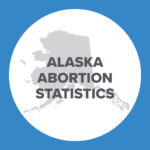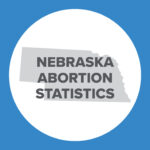Minnesota Governor Vetoes Informed Consent Bill


On May 16, 2018, Minnesota Governor Mark Dayton (D) vetoed legislation that would have protected patient autonomy and shielded physicians from liability. The Minnesota Legislature passed and presented S.F. 2849 to Governor Dayton to ensure that expectant mothers may give informed consent to abortion procedures. S.F. 2849 would have codified a woman’s right to choose to view ultrasound imaging prior to an abortion where the facility voluntarily performs an ultrasound. The legislation did not require physicians to perform ultrasounds and it did not require expectant mothers to view the ultrasound images.
Nevertheless, Gov. Dayton vetoed S.F. 2849 despite the fact that the bill received bipartisan support. In a statement, Dayton suggested that S.F. 2849 “…interferes with the doctor-patient relationship, legislating the private conversations that occur about a legal medical procedure.” Repeating Planned Parenthood talking points, Gov. Dayton relied on an incorrect legal analysis that represents an actual affront to patient autonomy and informed consent.
Informed Consent: A Brief History
Historically, physicians controlled medical treatment decisions and excluded patients from the decision-making process.[1] In the early 20th century, informed consent emerged as a legal doctrine that secured patient autonomy and shielded patients from unwanted intrusions into their bodies.[2] Originally, American courts held that surgeons who performed medical treatments without having properly obtained informed consent were guilty of assault or battery.[3] Over time, American courts treated failure to obtain informed consent as a negligence tort rather than an assault or battery. Today, informed consent rests on settled principles of the patient’s personal autonomy and enhanced decision making.[4]
In Planned Parenthood of Southeast Pennsylvania v, Casey, the U.S. Supreme Court held that Pennsylvania’s informed consent provision was not an undue burden on women seeking abortions.[5] The Court ruled that it is not an undue burden to require a 24-hour waiting period.[6] It is not an undue burden to require a physician to provide information about the probable gestational age of the “fetus.”[7] It is not an undue burden to require physicians to provide information about the nature of the abortion procedure.[8] It is not an undue burden to require physicians to provide information about the risks of abortion and childbirth.[9] It is not an undue burden to require physicians to inform women of available information related to the consequences to the “fetus.”[10]
Additionally, the Court affirmed that the physician-patient relationship derives from the woman’s position as the decision maker regarding her options.[11] Moreover, the Court ruled that informed consent requirements do not implicate the physician’s First Amendment rights.[12] States have the authority to regulate and to license the practice of medicine.[13] In fact, States have a compelling interest in regulating the practice of professions within their borders.[14]
Minnesota & Informed Consent
Prior to Gov. Dayton’s veto, the Minnesota legislature voted to expand protections for expectant mothers under the state’s existing informed-consent law. S.F. 2849 codified a woman’s right to choose to view ultrasound imaging prior to an abortion where the facility performs an ultrasound as part of the process of confirming and/or locating the pregnancy.[15]
Under Minnesota Statutes § 145.4242, expectant mothers are entitled to a physician phone call 24 hours before the abortion.[16] The physician is required to explain abortion- related medical risks, the probable gestational age of the unborn child, and medical risks associated with carrying the child to term.[17] If the unborn child is 20 weeks’ gestational age or beyond, physicians must inform expectant mothers whether or not anesthetic or analgesic would eliminate pain that the abortion may inflict on the child.[18]
S.F. 2849 did not require abortion facilities to perform an ultrasound or to provide questionably sourced information. S.F. 2849 did not require expectant mothers to view an ultrasound before obtaining an abortion. Instead, S.F. 2849 recognized that ultrasounds are routine medical examinations used to screen for genetic disorders, ectopic pregnancies, and heart rate.[19] And S.F. 2849 acknowledged that expectant mothers have a right to be apprised of accurate, real-time information that impacts their ability to understand and to legally consent to a medical procedure. In a profound sense, the information that must be offered belongs to the woman – it is uniquely her own.
Ultrasound technology is among the most common forms of medical imaging. Physicians routinely use ultrasounds to examine and to monitor the health of expectant mothers and unborn children.[20] A powerful tool, ultrasounds allow physicians and patients to view an unborn child and to see and hear an unborn child’s heartbeat. Today, three-dimensional and four-dimensional ultrasounds capture dynamic visualizations of the unborn child that include facial contours.[21] In abortion facilities, ultrasound technology is used on a routine basis. Abortion facilities use ultrasound technology to pinpoint the unborn child’s location, developmental stage, and even “fetal” heart rate.[22]
Minnesota is one of 30 states that have enacted some abortion informed-consent laws.[23] With several Democrats supporting S.F. 2849, Minnesota nearly became the 28th to improve patient autonomy with ultrasound-related legislation.[24] Nine states require abortion providers to perform ultrasounds and to offer patients an opportunity to view the images.[25] Nine other states require providers to offer an opportunity to view the images if the facility performs an ultrasound.[26] Six states require abortion providers to offer ultrasounds.[27] And four other states require abortion providers to display and describe ultrasound images.[28]
Some states require providers to offer to perform an ultrasound, to offer an opportunity to view the ultrasound image, to display the ultrasound image, and to verbally describe the ultrasound image. Virginia and Wisconsin, which require providers to perform ultrasounds and patients to view results, exempt victims of sexual assault from the provision’s mandate to view.[29] In the case at hand, the Minnesota legislature chose a moderate, voluntary approach that proved capable of drawing support from several Democrats.
Protecting Patient Rights
Gov. Dayton incorrectly argues that informed-consent laws interfere with the physician-patient relationship. At its core, Gov. Dayton suggests that S.F. 2849 constitutes compelled ideological speech and harms physicians. Gov. Dayton’s position contradicts American case law and undermines patient autonomy.
Under Casey, State laws that require disclosure of information as part of obtaining a patient’s informed consent for abortion do not violate a physician’s First Amendment freedom of speech rights.[30] In particular, States have a compelling interest in informed consent as applied to the physician-patient relationship.[31] Moreover, States routinely regulate informed consent because it is the intersection of public health and legal liability.[32]
S.F. 2849 is constitutional and appropriate because it treats abortion on the same basis as other, common medical procedures. Getting a cavity filled? How about an x-ray of a sprained ankle? Or, what about a minor Botox treatment? Invariably, providers must present patients with information about risks, benefits, and side effects. And patients sign waivers of liability to acknowledge that they have been properly informed and consent to the medical procedure—big or small. Abortion is no exception.
Moving forward, the Minnesota legislature adjourned Sunday, May 20, 2018. Unfortunately, the legislature lacked the required two-thirds vote of members in each house to override the veto. Consequently, Minnesota will have to wait until next year to pursue the measure. However, Gov. Dayton declined to seek reelection in 2018 and the race to replace him is as of now a toss-up.[33] Thus, Minnesota voters and lawmakers have reason to hope the next legislative session may bring a different outcome for this proposal.
[1] Pratt v. Davis, 79 N.E. 562 (Ill. 1906), see also Mohr v. Williams, 104 N.W. 12 (Minn. 1905) and Schloendorff v. Soc’y of N.Y. Hosp., 105 N.E. 92, 93 (N.Y. 1914) (Cardozo, J.).
[2] Id.
[3] Schloendorff, 105 N.E. 92, 93 (N.Y. 1914), supra at 1.
[4] Id.
[5] Planned Parenthood of Southeastern Pennsylvania v. Casey, 505 U.S. 833, 838, 112 S. Ct. 2791, 2800, 120 L. Ed. 2d 674 (1992).
[6] Id.
[7] Id.
[8] Id.
[9] Id.
[10] Id.
[11] Id.
[12] Id.
[13] Id.
[14] Goldfarb v. Virginia State Bar, 421 U.S. 773, 95 S. Ct. 2004, 44 L. Ed. 2d 572 (1975).
[15] Planned Parenthood. “What Is an Ultrasound Test? | Procedure, Cost & Risks.” Planned Parenthood, National – PPFA, www.plannedparenthood.org/learn/pregnancy/prenatal-care/whats-ultrasound, see also Crochet JR, Bastian LA, Chireau MV. Does This Woman Have an Ectopic Pregnancy? The Rational Clinical Examination Systematic Review. JAMA. 2013;309(16):1722–1729. doi:10.1001/jama.2013.3914.
[16] Minnesota Statutes 2016 § 145.4242
[17] Id.
[18] Id.
[19] Women’s Health Care Physicians. (17, June). Retrieved from https://www.acog.org/Patients/FAQs/Ultrasound-Exams, see also Women’s Health Care Physicians. (17, June). Retrieved from https://www.acog.org/Patients/FAQs/Ultrasound-Exams.
[20] Id., see also “Medical Imaging – Ultrasound Imaging.” U S Food and Drug Administration Home Page, Center for Biologics Evaluation and Research, 2 May 2018, www.fda.gov/Radiation-EmittingProducts/RadiationEmittingProductsandProcedures/MedicalImaging/ucm115357.htm.
[21] Id.
[22] Planned Parenthood. “What Is an Ultrasound Test? | Procedure, Cost & Risks.” Planned Parenthood, National – PPFA, www.plannedparenthood.org/learn/pregnancy/prenatal-care/whats-ultrasound.
[23] Brief for the States of Texas, Alabama, Arkansas, Indiana, Kansas, Louisiana, Michigan, Missouri, Nebraska, Ohio, Oklahoma, South Carolina, West Virginia, Governor Phil Bryant of the State of Mississippi, and Paul R. Lepage, Governor of Maine, As Amici Curiae Supporting Appellants, EMW Women’s Surgical Center, P.S.C., Et. Al. v. Andrew G. Beshear, No. 17-6151 (6th Cir. Jan. 2018), citing
Ala. Code § 26-23A-4; Ariz. Rev. Stat. § 36-2153; Ark. Code § 20-16-1703; Fla. Stat. § 390.0111(3); Ga. Code § 31-9A-3; Idaho Code § 18-609; Ind. Code § 16-34-2-1.1; Iowa Code § 146A.1; Kan. Stat. § 65-6709; Ky. Rev. Stat. § 311.725; La.Stat. § 40:1061.10; Mich. Comp. Laws § 333.17015; Minn. Stat. § 145.4242; Miss. Code § 41-41-33; Mo. Stat. § 188.027; Neb. Rev. Stat. § 28-327; N.C. Gen. Stat.
- 90-21.82; N.D. Cent. Code § 14-02.1-02; Ohio Rev. Code § 2317.56; Okla. Stat. tit. 63, § 1-738.2; 18 Pa. Stat. and Cons. Stat. § 3205; S.C. Code § 44-41-330; S.D. Codified Laws § 34-23A-10.1; Tenn. Code § 39-15-202; Tex. Health & Safety Code § 171.012; Utah Code § 76-7-305; Va. Code § 18.2-76; W. Va. Code § 16-2I-2; Wis.Stat. § 253.10; see also Wyo. Stat. Ann. § 35-6-119.
[24] Requirements for Ultrasound. (2018, May 01). Retrieved May 22, 2018, from https://www.guttmacher.org/state-policy/explore/requirements-ultrasound
[25] Ala. Code § 26-23A-6; Ariz. Rev. Stat. § 36-2156; Fla. Stat. § 390.0111; Ind. Code § 16-34-2-1.1; Iowa Code § 146A.1; Kan. Stat. § 65-6709; Miss. Code § 41-41-34; Ohio Rev. Code § 2317.561; Va. Code § 18.2-76.
[26] Ark. Code § 20-16-602; Ga. Code § 31-9A-3; Idaho Code § 18-609; Mich. Comp. Laws § 333.17015; Neb. Rev. Stat. § 28-327; S.C. Code § 44-41-330; Utah Code § 76-7-305; W. Va. Code § 16-2I-2.
[27] Mo. Stat. § 188.027; N.D. Cent. Code § 14-02.1-04; S.D. Codified Laws § 34-23A-52; Wyo. Stat. § 35-6-119.
[28] Ky. Rev. Stat. § 311.727(2); La. Stat. § 40:1061.10(D); Tex. Health & Safety Code § 171.012(a)(4); Wis. Stat. § 253.10.
[29] Requirements for Ultrasound, supra at 24.
[30] Planned Parenthood of Southeastern Pennsylvania v. Casey, 505 U.S. 833 (1992)
[31] Id.
[32] Id.
[33] Sabato’s Crystal Ball. (n.d.). Retrieved May 22, 2018, from http://www.centerforpolitics.org/crystalball/2018-governor/
























